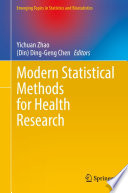Statistical Methods for Healthcare Performance Monitoring 1st Edition by Alex Bottle, Paul Aylin ISBN 9781315355467 1315355469
$50.00 Original price was: $50.00.$25.00Current price is: $25.00.
Statistical Methods for Healthcare Performance Monitoring 1st Edition by Alex Bottle, Paul Aylin – Ebook PDF Instant Download/Delivery: 9781315355467 ,1315355469
Full download Statistical Methods for Healthcare Performance Monitoring 1st Edition after payment

Product details:
ISBN 10: 1315355469
ISBN 13: 9781315355467
Author: Alex Bottle, Paul Aylin
Healthcare is important to everyone, yet large variations in its quality have been well documented both between and within many countries. With demand and expenditure rising, it’s more crucial than ever to know how well the healthcare system and all its components – from staff member to regional network – are performing. This requires data, which inevitably differ in form and quality. It also requires statistical methods, the output of which needs to be presented so that it can be understood by whoever needs it to make decisions.
Statistical Methods for Healthcare Performance Monitoring covers measuring quality, types of data, risk adjustment, defining good and bad performance, statistical monitoring, presenting the results to different audiences and evaluating the monitoring system itself. Using examples from around the world, it brings all the issues and perspectives together in a largely non-technical way for clinicians, managers and methodologists.
**__Statistical Methods for Healthcare Performance Monitoring__** is aimed at statisticians and researchers who need to know how to measure and compare performance, health service regulators, health service managers with responsibilities for monitoring performance, and quality improvement scientists, including those involved in clinical audits
Statistical Methods for Healthcare Performance Monitoring 1st Edition Table of contents:
1: Introduction
1.1 The Need for Performance Monitoring
1.2 Measuring and Monitoring Quality
1.3 The Need for This Book
1.4 Who Is This Book For and How Should It Be Used?
Common Abbreviations Used in the Book
Acknowledgment
2: Origins and Examples of Monitoring Systems
Aims of This Chapter
2.1 Origins
2.2 Healthcare Scandals
2.2.1 Responses to the Scandals
2.3 Examples of Monitoring Schemes
2.4 Goals of Monitoring
2.4.1 Accountability 2.4.2 Regulation and Accreditation2.4.3 Patient Choice
2.4.4 Openness and Transparency
2.4.5 Quality Improvement
2.4.6 Prevent Harm and Unsafe Care
2.4.7 Professionalism
2.4.8 Informed Consent
3: Choosing the Unit of Analysis and Reporting
Aims of This Chapter
3.1 Issues Principally Concerning the Analysis
3.1.1 Clustering (*)
3.1.2 Episode Treatment Groups
3.2 Issues More Relevant to Reporting: Attributing Performance to a Given Unit in a System
4: What to Measure: Choosing and Defining Indicators
Aims of This Chapter
4.1 How Can We Define Quality? 4.2 Common Indicator Taxonomies4.3 Particular Challenges of Measuring Patient Safety
4.4 Particular Challenges of Multimorbidity
4.5 Measuring the Health of the Population and Quality of the Whole Healthcare System
4.5.1 The WHO Annual World Health Statistics Report
4.6 Efficiency and Value
4.6.1 Data Envelopment Analysis and Stochastic Frontier Analysis (*)
4.7 Features of an Ideal Indicator
4.8 Steps in Construction and Common Issues in Definition
4.9 Validation of Indicators
4.10 Some Strategies for Choosing among Candidates
4.11 Time to Go: When to Withdraw Indicators 4.12 Conclusion5: Sources of Data
Aims of This Chapter
5.1 How to Assess Data Quality
5.2 Administrative Data
5.2.1 Coding Systems for Administrative Data
5.2.2 Use of Administrative Databases to Flag Patient Safety Events
5.3 Clinical Registry Data
5.4 Accuracy of Administrative and Clinical Databases Compared
5.5 Incident Reports and Other Ways to Capture Safety Events
5.6 Surveys
5.7 Other Sources
5.8 Other Issues Concerning Data Sources
5.9 Conclusion
6: Risk-Adjustment Principles and Methods
Aims of This Chapter
6.1 Risk Adjustment and Risk Prediction 6.2 When and Why Should We Adjust for Risk?6.3 Alternatives to Risk Adjustment
6.4 What Factors Should We Adjust For?
6.4.1 Factors Not under the Control of the Provider
6.4.2 Proxies Such as Age and Socioeconomic Status
6.4.3 Comorbidity
6.4.4 Disease Severity
6.5 Selecting an Initial Set of Candidate Variables
6.6 Dealing with Missing and Extreme Values
6.7 Timing of the Risk Factor Measurement
6.8 Building the Model
6.8.1 Choosing the Final Set of Variables from the Initial Set of Candidates
6.8.2 Decide How Each Variable Should Be Entered into the Model
People also search for Statistical Methods for Healthcare Performance Monitoring 1st Edition:
statistical methods for quality improvement pdf
statistical methods for healthcare performance monitoring pdf
statistical methods for hospital monitoring with r
statistical health monitoring
methods of performance measurement for health informatics projects
Tags: Alex Bottle, Paul Aylin, Statistical Methods, Healthcare Performance Monitoring
You may also like…
Computers - Algorithms and Data Structures
Statistical Models and Methods for Data Science Leonardo Grilli
Relationships & Lifestyle - Exercise & Fitness
Peak Strength Competitive Performance Roadmap 1st Edition Alex Bromley
Earth Sciences - Meteorology











